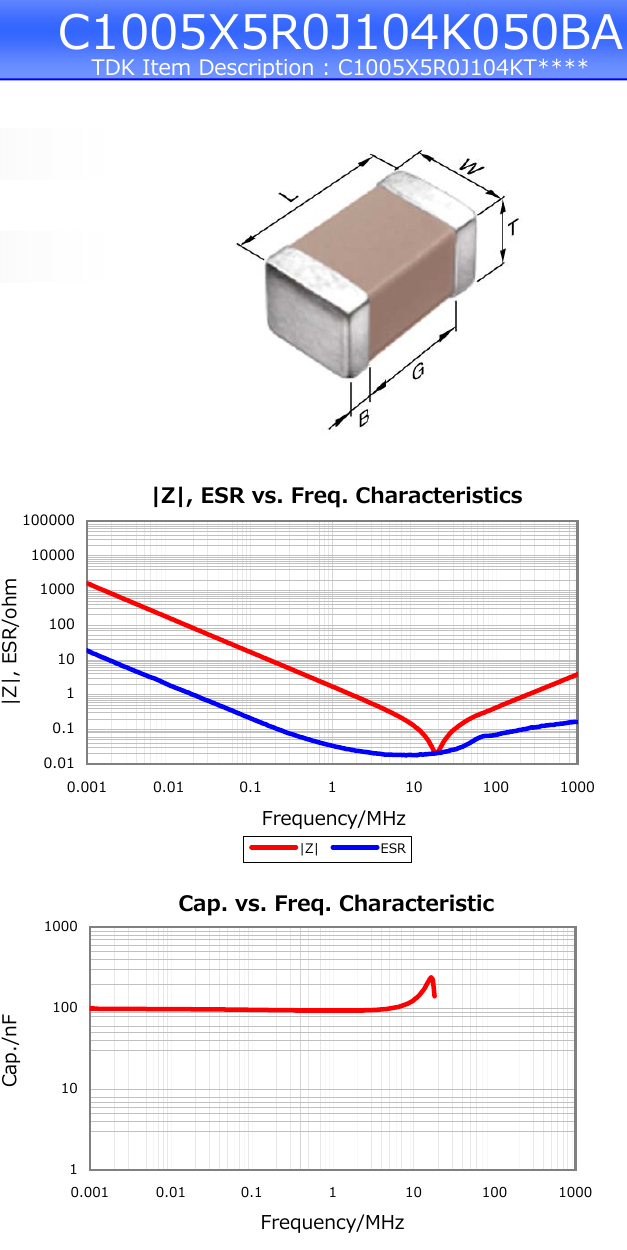P2 bypass caps
 Peter Jakacki
Posts: 10,193
Peter Jakacki
Posts: 10,193
I've noticed that P2EDGE and P2EVAL products use 4.7uF X5Rs, but how do they compare to 100nF of the exact same series? Those of us who have been using bypass caps since we were weaned know that the type, the value, the position, the pcb, the switching characteristics and frequency etc determine how effective they will be anyway.
However here it shows that capacitance and ESR with the 100nF is much superior to the 4.7uF at the higher frequency. What may benefit many designs though is mixing in different values such as 10nF and 100nF and some 4.7uF bulk caps which don't have to be as close to the pins but are usually part of the regulator output.
What are your thoughts?
Here's an EEVblog talking about this very thing.



However here it shows that capacitance and ESR with the 100nF is much superior to the 4.7uF at the higher frequency. What may benefit many designs though is mixing in different values such as 10nF and 100nF and some 4.7uF bulk caps which don't have to be as close to the pins but are usually part of the regulator output.
What are your thoughts?
Here's an EEVblog talking about this very thing.







Comments
The total nH of the traces ultimately determines high MHz values.
Many regulators need some min C in the uF region for stability.
With SMPS regulators, there is some argument for having the lower dip, better matched to the SMPS MHz, especially on a P2 with (very) low PSRR on the ADCs
Another solution for 100nF and 4u7, is to have 10 x 470nF to meet the PSU CL min, and also give lowest impedances around the MCU.
Yes, and the dC/dV and dC/dT are close to terrible on the the smallest parts with the highest dielectrics.
There are plenty pf app notes that describe the preference for multiple value capacitors (bulk plus 1.0uF / 100nF / 10nF) and smaller capacitors too. In fact there is a 1206 made as an 0612 ie the plates are on the long edge where the series inductance (ESL) goes down from 1250pH to just 63pH.
Here is an impedance graph from KEMET
Note the effect of combining 1uF with 100nF and 10nF
sigcon.com/Pubs/news/9_07.htm
Hope it helps a bit.
I tried slowing the playback to lower the pitch but then he just sounds wasted.
I have resorted to sub titles and killing the volume.
Come back robo-voice, all is forgiven
Some of us Americans have a problem with Brits also.
Just a note about accents: born a quarter-blooded brazilian cannibal (genetics), I was tought since ever to ask no questions to my (prospective) meals, so, no sound was expected, only the taste did matters; it is just a question of bite, chew and swallow!
I don't remember where I saw that said, think it was in a datasheet for a switching regulator... But, I just found this from Nasa.
Ok, that link doesn't work...
Just google:
NASA Electronic Parts and Packaging (NEPP) Program
Screening Techniques for Ceramic Capacitors Guidelines for Selection, Screening and Qualification of Low-Voltage Commercial Multilayer Ceramic Capacitors for Space Programs